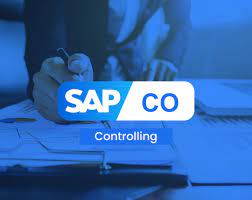SAP CONTROLLING(ECC+S4HANA) Course Content
Basic settings for controlling
Defining Controlling Area
Defining Number ranges for Controlling Area
Maintain Planning Versions
Cost element accounting:
creation of primary cost elements from financial accounting area
creation of primary cost elements from controlling area
display of cost element master records
change cost element master records
primary cost element categories
secondary cost element categories
default account assignments
Cost Center Accounting
Defining Cost Center Standard Hierarchy
Creation of Cost Centers and cost center groups
display cost center master records
change cost center master records
creation of cost center groups
Creation of activity types and groups
Create Statistical Key Figures and Groups
planning for cost centers
Activity Dependent Planning
Activity independent planning
Cost Center Splitting
Activity price calculation
Creation and Execution of Distribution Cycle
Creation and execution of assessment cycles
Internal Order Accounting
Order Types
Model Orders
Statistical Orders
Internal order Planning
Budget profile
Planning Profile
Source structure
Allocation Structure
PA transfer structure
Settlement Profile
Profit Center Accounting
Controlling settings
Dummy profit center
Actual data
Profit center
Assignment of revenue elements
Choose accounts
Creation of cost object
Planning profit and loss items
Planning balance sheet items.
Transfer pricing
Product Costing
Product cost Planning
Costing sheet
Cost component structure
Costing variant
Costing types
Valuation variant
Quantity structure controls
Date controls
Transfer controls
Reference controls
Cost Object Controlling
Product cost by Order
Product cost by period
Sales order costing (ATO, MTO PTO)
Actual costing / Material Ledger
Period end activities
WIP Calculation
Variance key
Settlement
Result Analysis
CO-PA
Define Operating Concern
Define Characteristics and value fields
Define profitability Segment Characteristics
Define Characteristics Hierarchy and Derivation
Maintenance and Assignment of value fields
COPA valuation strategy
COPA Planning
Transfer of Billing Document to COPA
Automatic Account Assignment
Maintain PA Transfer structure for Direct FI Postings
COPA Assessment
Report painter
Form Based reports
Key figure based reports
Information System in COPA
Top down distributions in COPA
COPA reconciliation
Integration topics
Integration with MM
Integration with SD
Integration with FI
Integration with PP
Integration with PS
Integration with PM
Integration with CS
Integration with TM
Integration with BI and APO
Business Scenarios in Real time projects
GR based overhead calculation
Quantity based overhead calculation
Percentage based overhead calculation
Intercompany costing and Intra company costing
Contractual manufacturing process
Commercial costing
Toll Manufacturing process
Product cost by process order
Result Analysis methods
Inventory Valuation
Overhead groups & Keys
Origin Groups
Direct activity and indirect activity allocation
Special procurement key
Material origin
Primary and auxiliary cost component structure
Mixed costing
Additive costing
Unit costing
Split Valuation
Co product and by product
Scrap variance
Template allocation
Real Time Concepts
Uploading the Data(LSMW) to SAP Server
Transport Request Creation and Release and Soft configuration info
Month End, Year End Closing Activities
FAQS
Tickets
Project on Real Time Scenarios
• Explanation on ASAP Methodology
• Demo on Live Systems
• SAP R/3 System Landscape Model – Transport Strategy
• Project Implementation through SAP Solution Manager
• End-to-End Implementation Project on real time business objects in phase sequence as shown below.
1. Project Preparation
2. Business Blue Print
3. Realization
4. Final Preparation
5. Go-Live
• Elaborating the role of Consultants in different stages of project including documentation, presentations to be done by them
• Project Environment & roles n responsibilities in other types of projects
1. Support/ Maintenance
2. Roll-out/ Template
3. Upgradation
• Overview on Interaction with clients & team in On-site/ Off-Shore Model
• Liaison between Offshore and Onsite

